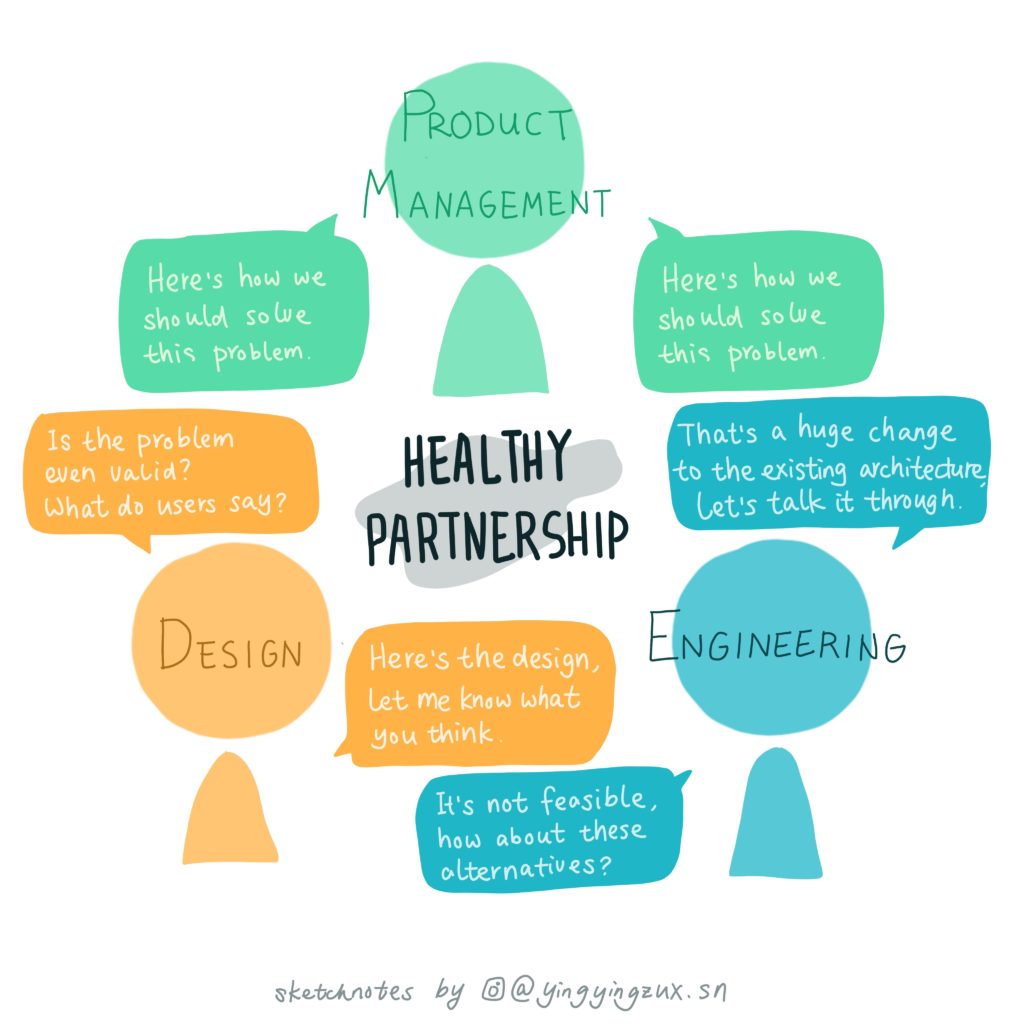
Recently, I was asked about thoughts on having our Design department reporting to the Product organization. It’s a fairly common setup for startups and makes sense to me as well — having Design and Product Management in the same organization helps facilitate more close collaboration, and this is always good. One thing for the designers to keep in mind though: reporting to Product Management doesn’t mean designers should give in to everything PM says.
In software companies, designers, PM, and engineers are in charge of different phases of the product development: a PM owns the product roadmap and how it makes money for the company; a designer advocates for the best experience a user could possibly have; an engineer knows inside out about technical feasibility and is the solution builder. They coordinate with each other on figuring out what should be built, how it could be built, and make it into reality.
I think a healthy partnership between these three parties requires collaboration, and yet some necessary tension — each party should be ready to be willing to work with the other two, but also challenged by them.
As a designer, I’ll speak from my perspective.
Work with product management:
- Collaborate with them – inspire your PM partner with your design research and explorations. This will help them better visualize a feature.
- Challenge them – if your PM partner wants to optimize for a particular business metric, but that means adding friction to user experience, a designer should bring it to attention and make sure everyone understands the cost. If you have doubts about any problem statement or assumptions made by your PM, you need to ask questions, work with the PM to find data to validate or invalidate them. This helps both of you plan and design the right thing. This will also make others respect your stance.
Work with engineers:
- Collaborate with them – when your engineering partner raises questions about your design solution, give your reasons and make sure they understand why you designed it in a certain way.
- Challenge them – when a design solution is not feasible to build, understand why they would say that. If it’s because of a lack of knowledge/skills in building out design in a certain way, inspire them with how others have done it. If it’s truly infeasible, work with them to find out alternatives.
At the end of the day, maintaining a healthy partnership is really a balancing act. It’s not about who wins, but find out a way to make all of us succeed.